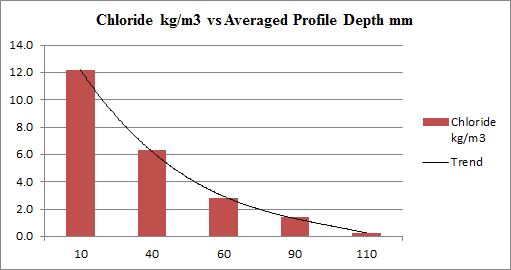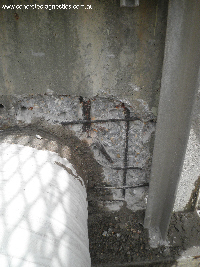Chloride is an aggressive anion that can breakdown the passive film that protects steel reinforcement within concrete. This leads to the reinforcement corroding and subsequent cracking and spalling of the concrete.
Concrete Testing using chloride profiling of concrete structures can determine if the level of chloride ion penetration has reached the depth of the reinforcement. This can assist in determining if corrosion may pose a risk to the structure.
From the chloride profile, trends can be observed, such as where the chlorides might have originated (eg external source or contaminated sands or aggregate) and their mobility through the concrete.
The graph below show a typical chloride profile of a concrete structure exposed to a marine environment. It shows the external surface having high chloride content, and decreases as we move deeper into the concrete.
If more extensive information is required, chloride diffusion coefficients can be calculated using the concrete profile.







